Advice from the Help Desk of the UC Master Gardeners of Contra Costa County
Client's Request: I have a grass/thistle covered steep hillside I need to get planted with erosion control shrubs/trees and want some advice on plant choice. The hill overlooks Highway 24 on the north side of the highway and faces west. It gets full sun most of the day and lots of wind. I will be able to get drip or overhead water to the plants. The main purpose is erosion control. The dirt seems sandy - it gives when you walk up the steep hill. This is a large area, maybe 150 feet x 70 feet for now and then another 100 x 70 feet south facing portion of the hill later. I added a metal stake deer fence, but I'm wanting plants that can someday be deer resistant without the fence.
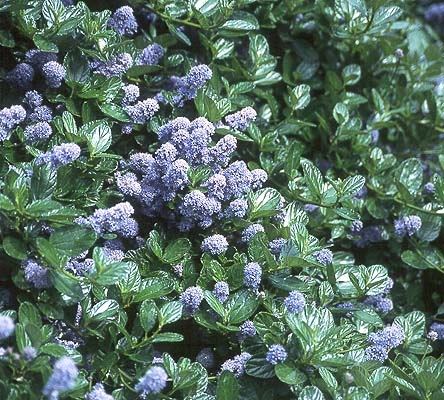
pix: Oregon State Univ
My thoughts are Coast Live Oak, Valley Oak, Toyon, Salvia and Sage, and maybe Ceanothus Blue Jeans or Bearberry. Olive and fig or other fruit bearing trees would be interesting. I'm looking for hardy, low or no water trees/shrubs/plants, ideally fast growing, and little maintenance. Thoughts? Also, do you suggest one gallon or larger planting size containers?
And finally, if you have a suggestion for someone that has access to wholesale plants like at Devil Mountain and can plant or help me plant for a reasonable charge, please let me know.
Any assistance would be appreciated.
Response from the MGCC Help Desk: Selecting, planting, and establishing plants on steep west and south facing hillsides for erosion control is both a great idea and, as you have discovered, a challenge. You mentioned that you are looking for plants which thrive under the following conditions: full sun, wind tolerant, deer resistant, low to no supplemental water, and little to no maintenance. In addition, you mentioned that your dirt “seems sandy” on top.
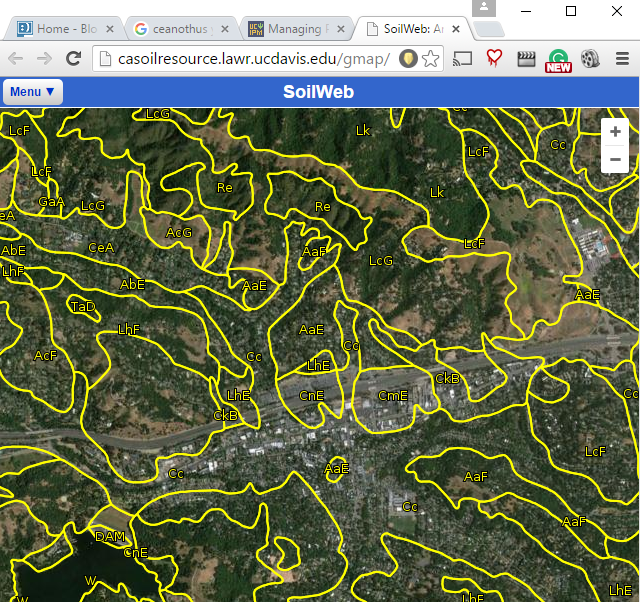
Plant Selection – As you suggested, it is a good idea to plant a variety of plants to stabilize the soil. I have done some research on plants which might be successful on your slope with particular concern for very low water use requirements once established, plants which may be less attractive to deer, and plants which are moderate or fast growing. You mentioned Coast Live Oak, Valley, and Toyon which all seem like good choices. You also mentioned Sage (Salvia) and while many sages are classified as low water use and deer resistant, others are moderate water use, and they tend to be shorter lived, so Sage wouldn't be my first choice for a long term “no maintenance” slope. You also mentioned fruit bearing trees such as olives and figs. While you certainly could plant these, they do require both water and maintenance to thrive. Following are a few suggestions (all of the shrubs require some supplemental water to thrive, especially during the several years to establish and/or during extended droughts):
Trees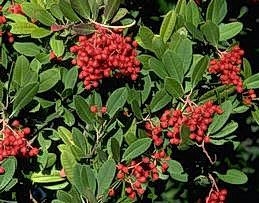
pix: UCANR
Valley Oak (Quercus lobata) – low water
Tall Shrubs
Toyon (Heteromeles arbutifolia) – low water
Coffeeberry (Frangula californica) – low water
Hopseed Bush (Dodonea viscosa) – low water
Sumac (Rhus ovata) – low water
Manzanita (Arctostaphylos densiflora ‘Sentinel') – a little slower growing,
Ceanothus ‘Blue Jeans' – not sure of deer resistance, low water
Ceanothus ‘Dark Star' or other small and thorny leafed types – low water
Low Shrubs and Ground Cover
Rosemary (Rosmarinus officinalis) – low water
Dwarf Coyote Bush (Baccharis pilularis ‘Pigeon Point') – low water
Manzanita (Arctostaphylos uva-ursi and others) – slow to establish, low water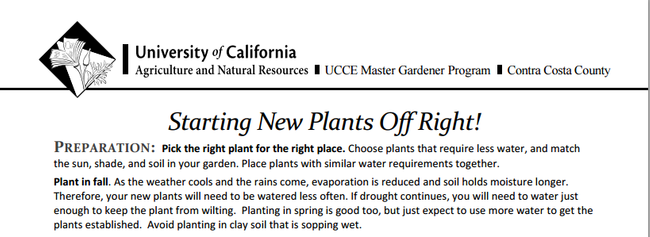
Additional Resources - You mentioned that you have read the Las Pilitas website which has a good article with videos on how to evaluate and stabilize a slope at http://www.laspilitas.com/garden/howto/slope.html.
Following are a few additional useful websites to help with plant selection, deer resistance, water use requirements, and erosion control:
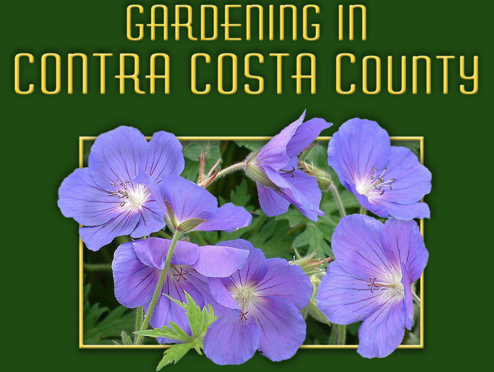
Garden Guide
Deer Resistance - Orchard Nursery in Lafayette has a “deer resistant plant guide” based on observations in the Lamorinda area http://www.orchardnursery.com/pdfs/nurserycare/10-deerlist.pdf . However, in times of drought when sources of food are low, almost all plants are susceptible to deer browse. In areas with lots of deer, such as along the Hwy 24 corridor, fencing or caging may be the only way to get plants large enough to withstand deer browse.
Water Use Requirements – The following website identifies plants by water use category http://www.waterwonk.us/ . Those classified as “low” should require a relatively small amount of water once established. Those classified as “very low” may be able to get by without any supplemental water once established, except during drought years.
Hillside Erosion Control - This Sonoma County Master Gardener article provides a general overview of erosion control methods, including guidance to mulch best suited for steep slopes
http://ucanr.edu/sites/scmg/Sonoma_Gardener_Articles/Gardening_on_a_Hillside/ .
Landscape Professionals – We cannot recommend any particular landscape design, construction or maintenance company. However, a list of organizations which provide references to these professionals can be found at this link http://www.phgsc.com/mgcc/FAQ_Landscape_Designers_Oct15.pdf. This list is neither comprehensive nor all-inclusive, and no endorsement of any business or professional is intended.
I hope you find this helpful to the completion of your project. Feel free to contact us if you have any additional questions.
Help Desk of the UC Master Gardeners of Contra Costa County (MPL)
Editor's addendum: While this response uses Lafayette as the example hillside garden, the procedure and references given could apply to almost any hillside property in Contra Costa County. If you need more guidance and/or assistance for your particular location and circumstances, please contact the Help Desk.
Note: The UC Master Gardeners of Contra Costa's Help Desk is available year-round to answer your gardening questions. Except for a few holidays, we're open every week, Monday through Thursday for walk-ins from 9:00 am to Noon at 75 Santa Barbara Road, 2d Floor, Pleasant Hill, CA 94523. We can also be reached via telephone: (925) 646-6586, email: ccmg@ucanr.edu, or on the web at http://ccmg.ucanr.edu/Ask_Us/ MGCC Blogs can be found at http://ccmg.ucanr.edu/HortCoCo/ You can also subscribe to the Blog.